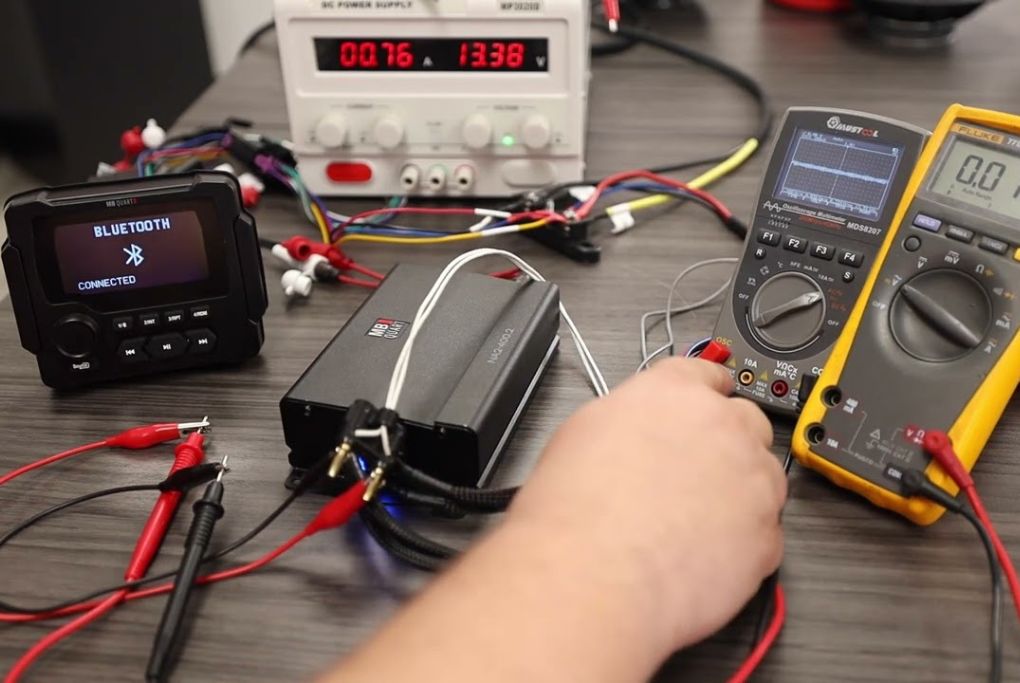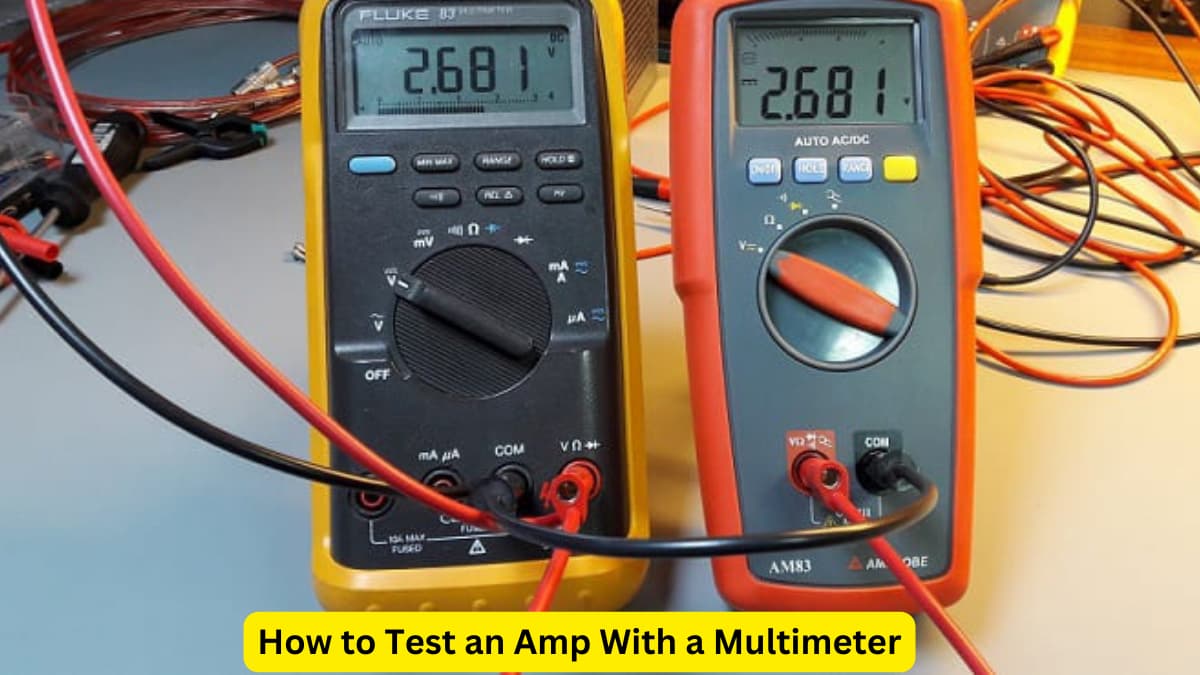How to Test an Amp With a Multimeter: Expert Guide in 2024
Welcome to the ultimate guide on How to Test an Amp With a Multimeter. let’s learn all about Test an Amp With a Multimeter.
How to Test an Amp With a Multimeter is a great skill. It is easy and very useful. It helps make sure your amp works right.
What You Need
- A multimeter
- Your amplifier
- Test leads (usually come with your multimeter)
- Screwdriver (if necessary)
- Owner’s manual for the amp (not always needed but helpful)
Preparation Steps
Before you start, make sure to do these things:
- Turn off your amp.
- Unplug the amp from the power source.
- Remove any connected speakers or inputs.
- Set your multimeter to the correct setting.

Setting Up Your Multimeter
Here’s how to set the multimeter to test for amps:
- Turn the dial on your multimeter to the “Amp” or “Current” setting.
- If the multimeter has multiple amp settings, choose the one for the current you expect to measure.
- Insert the black test lead into the port marked “COM” or a similar symbol.
- Insert the red test lead into the port with an “A” or “Amp” label. Be mindful to choose the right port for the expected current.
The Testing Process
Now, you are ready to test your amp:
- Open the amp’s output jacks by removing the screw or cap.
- Turn on the amp and let it warm up if needed.
- Hold the red test lead to the output you want to test.
- Hold the black test lead to the ground or negative terminal.
- Look at the multimeter to read the amps. This shows the current flowing through.
- Turn off the amp and unplug the test leads safely.
ALSO READ:
| Best Car Seat for 3-Year-Old Pros, Cons & Recommendations |
| Best Car Seats for 3 Across with Pros, Cons & Recommendations |
Safety Tips
Here are important tips to stay safe while testing:
- Always turn off the power before connecting the multimeter.
- Never touch the metal parts of the leads when the amp is on.
- Use multimeter leads that are in good condition.
- If something seems wrong, stop and double-check everything.
Troubleshooting Common Problems
If you’re having issues, here’s what you can do:
| Problem | Solution |
| No reading on the multimeter | Make sure the amp is on and the multimeter is properly set up. |
| Erratic readings | Check if the test leads are connected securely. |
| Too high or low reading | Verify you’ve chosen the correct current setting on the multimeter. |
Frequently Asked Questions Of How To Test An Amp With A Multimeter
Can A Multimeter Test An Amp?
A multimeter can test an amplifier’s current (measured in amperes), using its ammeter functionality.
What Settings To Use On A Multimeter For Amps?
For testing amps with a multimeter, set it to the current mode (A or mA, depending on the expected current range) and select the highest expected range for accuracy.
How To Connect Multimeter For Amp Testing?
Connect the multimeter in series with the circuit or component in question, ensuring the correct terminal ports are used: common (COM) and current (A or mA).
What Safety Measures To Take When Measuring Amps?
Safety first: ensure the circuit power is off before connecting the multimeter, use the correct settings, and start from the highest range when measuring amps.
Conclusion
Testing an amp with a multimeter is a handy trick. With these steps, you can do it safely and properly. Always read the manual of your amp for specific instructions. Happy testing!
Last Updated on May 2, 2024 by Brian Beasley

